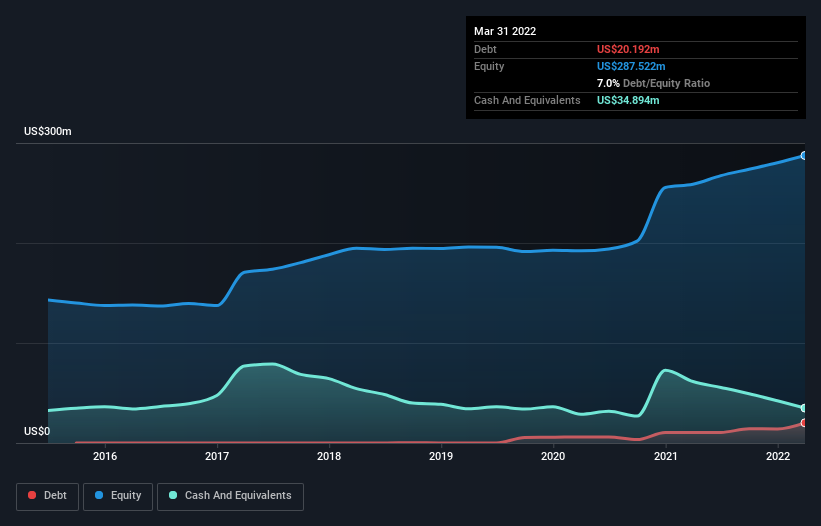Is AXT (NASDAQ:AXTI) Using Too Much Debt?
Some say volatility, rather than debt, is the best way to think about risk as an investor, but Warren Buffett famously said that 'Volatility is far from synonymous with risk.' So it might be obvious that you need to consider debt, when you think about how risky any given stock is, because too much debt can sink a company. Importantly, AXT, Inc. (NASDAQ:AXTI) does carry debt. But should shareholders be worried about its use of debt?
When Is Debt A Problem?
Debt is a tool to help businesses grow, but if a business is incapable of paying off its lenders, then it exists at their mercy. Part and parcel of capitalism is the process of 'creative destruction' where failed businesses are mercilessly liquidated by their bankers. However, a more usual (but still expensive) situation is where a company must dilute shareholders at a cheap share price simply to get debt under control. Of course, debt can be an important tool in businesses, particularly capital heavy businesses. The first thing to do when considering how much debt a business uses is to look at its cash and debt together.
View our latest analysis for AXT
What Is AXT's Net Debt?
As you can see below, at the end of March 2022, AXT had US$20.2m of debt, up from US$10.4m a year ago. Click the image for more detail. However, it does have US$34.9m in cash offsetting this, leading to net cash of US$14.7m.
A Look At AXT's Liabilities
Zooming in on the latest balance sheet data, we can see that AXT had liabilities of US$46.8m due within 12 months and liabilities of US$4.07m due beyond that. On the other hand, it had cash of US$34.9m and US$39.8m worth of receivables due within a year. So it can boast US$23.9m more liquid assets than total liabilities.
This surplus suggests that AXT has a conservative balance sheet, and could probably eliminate its debt without much difficulty. Succinctly put, AXT boasts net cash, so it's fair to say it does not have a heavy debt load!
In addition to that, we're happy to report that AXT has boosted its EBIT by 60%, thus reducing the spectre of future debt repayments. When analysing debt levels, the balance sheet is the obvious place to start. But it is future earnings, more than anything, that will determine AXT's ability to maintain a healthy balance sheet going forward. So if you're focused on the future you can check out this free report showing analyst profit forecasts.
Finally, a company can only pay off debt with cold hard cash, not accounting profits. AXT may have net cash on the balance sheet, but it is still interesting to look at how well the business converts its earnings before interest and tax (EBIT) to free cash flow, because that will influence both its need for, and its capacity to manage debt. During the last two years, AXT burned a lot of cash. While that may be a result of expenditure for growth, it does make the debt far more risky.
Summing up
While we empathize with investors who find debt concerning, you should keep in mind that AXT has net cash of US$14.7m, as well as more liquid assets than liabilities. And we liked the look of last year's 60% year-on-year EBIT growth. So we don't have any problem with AXT's use of debt. When analysing debt levels, the balance sheet is the obvious place to start. However, not all investment risk resides within the balance sheet - far from it. These risks can be hard to spot. Every company has them, and we've spotted 3 warning signs for AXT (of which 1 can't be ignored!) you should know about.
If you're interested in investing in businesses that can grow profits without the burden of debt, then check out this free list of growing businesses that have net cash on the balance sheet.
Have feedback on this article? Concerned about the content? Get in touch with us directly. Alternatively, email editorial-team (at) simplywallst.com.
This article by Simply Wall St is general in nature. We provide commentary based on historical data and analyst forecasts only using an unbiased methodology and our articles are not intended to be financial advice. It does not constitute a recommendation to buy or sell any stock, and does not take account of your objectives, or your financial situation. We aim to bring you long-term focused analysis driven by fundamental data. Note that our analysis may not factor in the latest price-sensitive company announcements or qualitative material. Simply Wall St has no position in any stocks mentioned.

